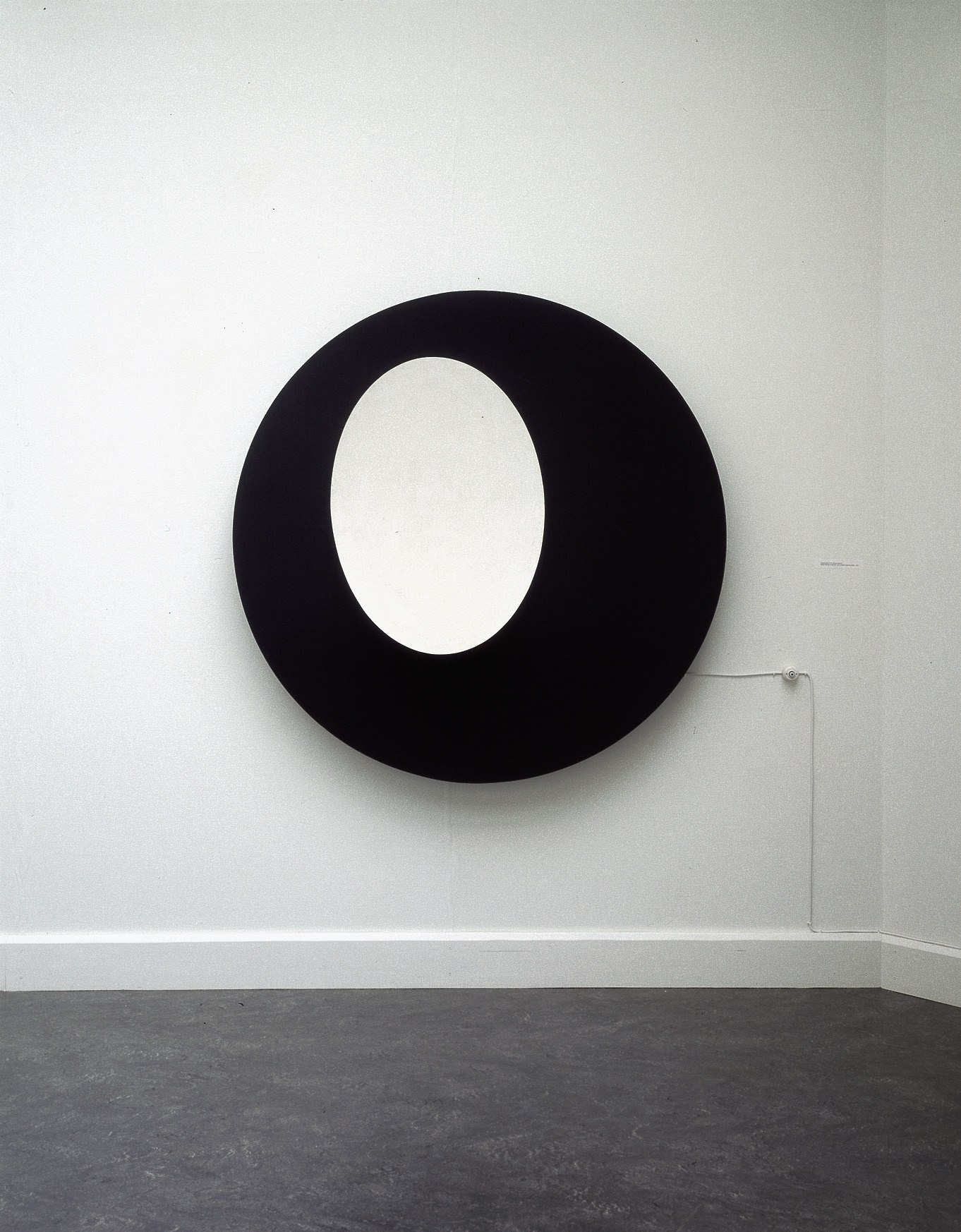Kinetisches Objekt mit konkaver Ellipse

Description
'Kinetische Objekt mit konkaver Ellipse' by the German artist Gerhard von Graevenitz consists of a large wooden disc painted black on which there is a white metal concave ellipse. With the aid of an invisibly mounted engine with an electrically driven system, the ellipse can be set into motion to rotate around an axis placed slightly off centre. As a result, the ellipse seems to move over the black disc.
In the early 1960s new movements aimed at objectivity emerged in the arts in response to Abstract Expressionism. This “nouvelle tendance” corresponded with the ideas of pre-war Constructivism in which the artists consciously worked on a new design for a new society. The artists of the “nouvelle tendance” adopted an anti-individualistic approach, carrying out research into aspects of visual perception in an almost scientific manner. In many cases they worked with a system as a starting point. This system was often not immediately clear to the viewer and it required a mental effort. The active role for the public in which the visitor is not merely a consumer should be seen as a stimulus for the visitor to adopt an approach with regard to social and political matters.
Von Graevenitz experimented with new materials and technology to develop new ideas. Movement, whether suggested or real, played an important role in this. This work by Von Graevenitz is an example of kinetic art. His attempts were based on a clearly formulated starting point to make images which have an unexpected effect. Initially his work consisted of large quantities of similar elements which formed different patterns all the time as the result of small movements. After 1967 he worked with fewer but larger elements which moved in relation to a background. In some cases there was only one element, as in this case. The elements in the background are both simple geometric forms. However, as a result of the a-centrically placed axis, the course of the movement of the ellipse is complex. The image does not remain the same for the viewer at any moment.
![[object Object]](/en/collection/trames-et-hasard/@@fallback-image/image/large)
![[object Object]](/en/collection/proefdruk-voor-boekomslag-ravvi-rabbi-van-olga-forsch/@@fallback-image/image/large)
![[object Object]](/en/collection-research/library/publications/gerhard-von-graevenitz-2/@@fallback-image/image/large)
![[object Object]](/en/exhibitions/verzameling-stadtisches-kunstmuseum-bonn/@@fallback-image/image/large)